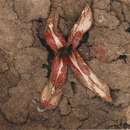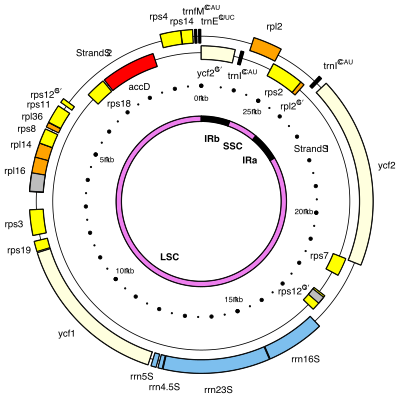en
names in breadcrumbs


Hydnora is a group of parasitic plants described as a genus in 1775.[2][3] It is native to Africa, Madagascar, and the Arabian Peninsula.[1][4][5] Hydnora pollinates through brood-site mimicry. This is a method of pollination in which the plant emits a smell that is attractive to insects, so that the plant can trap the insect and allow it to take pollen so that it can pollinate other Hydnora.[6]
The following species are listed within the genus Hydnora:[1]
The genus name Hydnora derives from the ancient Greek ὕδνον, 'truffle',[8][9] because of the somatic structure of this root parasite.[10]

One of the smallest plastid genomes among flowering plants has been found in the genus Hydnora.[12] As compared to the chloroplast genome of its closest photosynthetic relatives, the plastome of Hydnora visseri shows extreme reduction in both size (ca. 27 kilo base pairs) and gene content (24 genes appear to be functional).[11]
Other Hydnora species are known to be available in Southern African herbal markets in Mozambique[13] and South Africa.[14] In South Africa the Imbola yesiXhosa are reported to use a thin paste of the powdered Hydnora rhizome as a treatment for acne and other skin conditions.[15] In Uganda, the Hydnora spp. are reported to be used as food (fruits) and medicine (rhizomes) for diarrhea, hypertension, and diabetes,[16] though these claims have not been confirmed.
Hydnora is a group of parasitic plants described as a genus in 1775. It is native to Africa, Madagascar, and the Arabian Peninsula. Hydnora pollinates through brood-site mimicry. This is a method of pollination in which the plant emits a smell that is attractive to insects, so that the plant can trap the insect and allow it to take pollen so that it can pollinate other Hydnora.